South Korea: Traditional Bullfighting Without The Blood
Bullfighting South Korean Style
We travelled to Jinju with the main intention of visiting the Korean Festival of Lanterns, which was an ‘enlightening’ experience. We hadn’t realised that this festival coincided with so many other free events taking place around the city. The National Bullfighting competition takes place annually, in October, during the Jinju ‘Yudueng’.
We discovered the bull fight event by chance, as there is no tourist literature (in English) promoting this particular event to international visitors. Firstly, because there aren’t enough English speaking visitors to justify the production of such material. More importantly, I suspect Korean’s don’t want pesky foreigners interfering in this ancient tradition, drawing unwanted attention to what some would perceive, on hearing the term ‘bullfight’, as a barbaric practice. No need to worry! Korean style bullfighting must be seen to be believed. Bullfighting in Jinju is about as unnatural or cruel as a day at the races, and has more in common with horse racing rather than that of its bloody Spanish namesake. I’ll explain why.
Why we decided to see a Korean Bullfight
We’d got hold of a festival leaflet with an itinerary of all the events taking place, over the 14 day Jinju festival. On chatting with a random Korean woman, who’d befriended us on the street, she kindly talked us through the programme of events taking place, by translating them into English for us.
For some reason I was instantly interested in the bullfighting event, and not just because my Chinese zodiac sign is the Ox. However, I quickly realised that my better half (Craig) was going to require some persuasion if we were going to get anywhere near the bullfighting ring. After some probing, it became clear that this practice was more of a competitive show and there would be no fighting to the death involved. After some serious negotiation, Craig agreed to come along with me to see what bullfighting in Korea was all about.
Is Bullfighting a Korean Tradition worth Fighting for?
Jinju Bullfighting is one of Korea’s oldest traditional events. This tradition reportedly started during the Korean Three Kingdoms Period. Just because something has taken place for thousands of years, doesn’t necessarily mean its worthy of modern day support. Jinju is probably one of the best places to see bull fighting in the whole of South Korea. This is a tradition we are both glad to have experienced.
It was a great place to see the agricultural community, fans of the event and young families enjoying a day out. There appeared to be a few groups of gamblers, hidden amongst the crowds enjoying a punt, judging by the amounts of cash being exchanged just before and at the end of each round of competition. This was all in good humour and you could say added to the excitement a little. (Gambling is illegal for Korean’s in South Korea).
Behind the scenes at the Jinju Bullfighting Stadium
We arrived at the Jinju bullring stadium at around midday; we thought the competition was taking place between 10-1pm. We could only interpret the numbers on the Korean leaflet we had, it transpired that the event didn’t actually start until after 1pm. This meant we could walk around and checkout the behind the scenes area.
It was reassuring to walk around and view the bulls before the competition. What was great to see was everything, without exception, was open to the public. There were no hidden or closed off areas, giving you the impression that everything is above board. I have some limited experience of working on a farm, and livestock husbandry, so I believe I can offer some degree of merit to my opinions. All the bulls seemed extremely content surrounded by their proud owners and handlers in spacious temporary compounds. The bulls seemed very calm, despite me wearing red, as you probably know it’s an urban myth that colour red makes bulls angry.
With the demise of agricultural shows at home and the fact many bulls born become veal calves, it was a rare treat for me to study these large animals in their mature un-castrated form. In the UK most cows I see are dairy cows, and the bulls go off to the slaughter before you see them reach maturity.
The sheer beauty and power of these magnificently well cared for animals was a joy to see. As were the human characters you met walking around. Many of the handlers had severe limps and injuries from working with these strong and temperamental beasts. You don’t want to get on the wrong side of an angry bull!
It was interesting to see the bull’s food being meticulously and caringly prepared in large stainless cauldrons. The food is warmed over a wood fire or gas flame and mixed diligently, for a considerable period of time. The addition of warm soju, Korean style vodka, added to the feed. I guess it gives the bulls a bit of courage before entering the ring, and they all seemed more than capable of walking in a straight line, unlike a few of the men here.
South Korean Beef Rice Dish
At the bull ring, there isn’t a shortage of places to eat and drink. Not surprisingly, nearly everything here contains some part of a cow, and there are plenty of offal dishes on the menu. We were tempted by a traditional Korean beef dish called bibimbap (비빔밥), which seemed very popular with the locals.
It is beef mixed with vegetables and rice served with a spicy red paste. It was delicious as was the blood red liver soup that accompanied this dish. We did wash this down with several bottles of Soju. All the staff working in the food establishments are incredibly friendly and know all the regulars around the stadium, it’s a great atmosphere, and a little bit boozy. One of the guys who served us in the restaurant, gave us a demonstration of how to parade a bull at the end of our meal, now that’s multi-tasking.
The rules of Korean Bullfighting
You’ll have to excuse my interpretation of the rules, as they are based on what I saw attending this competition, and no doubt they’re a lot more complex. Unfortunately, we didn’t have the luxury of a guide or an interpreter.
First a random draw takes place, by an official from the Bullring decided the order of competition. This is quite exciting, as you can see the looks of despair and optimism as the trainers learn their allocated opponent.
The two bulls are led into the ring, by a rope, from opposing gates, each bull having one handler. There is a referee in the middle of the arena. The handlers then have to cross ropes so that if the bulls wish to engage in a fight, they will touch heads/horns. If a bull does not want to engage, it can see it is outmatched, this is also OK. More frequently than not this is how a competition was resolved, by one bull backing off or running away. However, when a pair bulls decide they want to fight it is an adrenaline fuelled couple of minutes. The pair of bulls push each other, head to head, in a show of strength to see which bull will tire first of this power struggle. The loser is the first bull to back off or run away. The rules are more sophisticated than this but, to the layman or uninitiated, that about sums up the rules of Korean Bullfighting. Here is a short video to show you what goes on.
Long live this great Korean tradition
There was something stimulating and most definitely entertaining watching the power of two bulls compete. I suppose it might be a gay man type thing, as I don’t possess any latent desire to engage in ‘zoophilia’.
We enjoyed watching many competitive rounds, the stamina and courage of the champion bulls is a spectacle to behold when they fight (I think it should be called bull wrestling as opposed to fighting though). We would not hesitate at the opportunity to be a spectator at another Korean bullfighting event.
How to get to Jinju Korea Bullfighting Stadium
The Jinju arena is located in Panmunodong-gil, to the east of Jinyangho Lake Park. Getting to the arena is fairly easy, and directions to the stadium are on the main roads when you get out of the downtown area. It is also listed on local maps.
The bull ring is located about 10 minutes by taxi outside the main downtown area of Jinju. A taxi will cost around 7,000 KRW.
You can also take any bus starting with the number ‘2’ to the stadium, for around 1,000 KRW, which we did and this takes about 15-20mins depending on the traffic. The buses are every 20-30 minutes.
You can see a bull fight at the Jinju stadium from March – November, every Saturday from 13:30-18:00hrs.

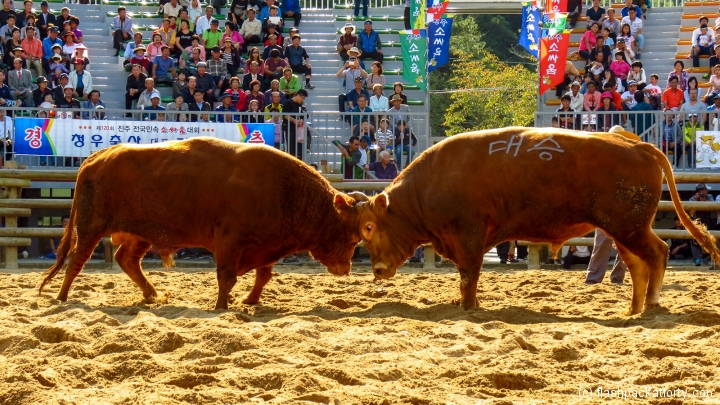
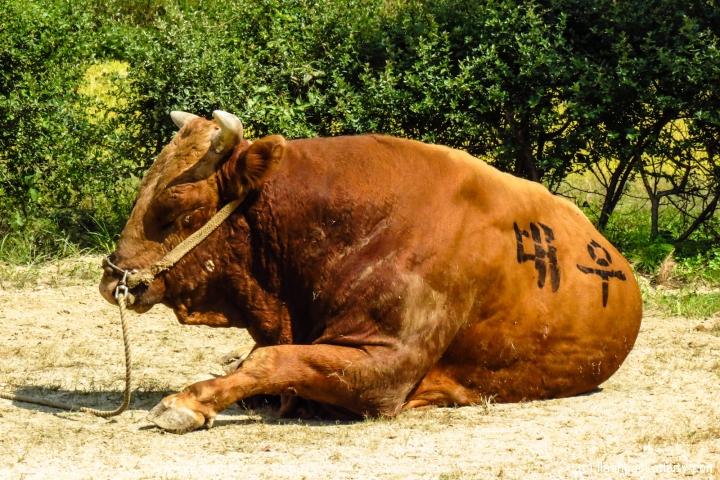
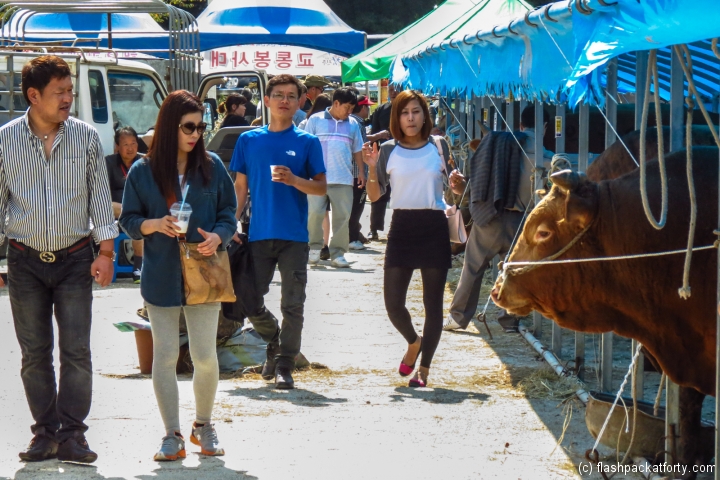
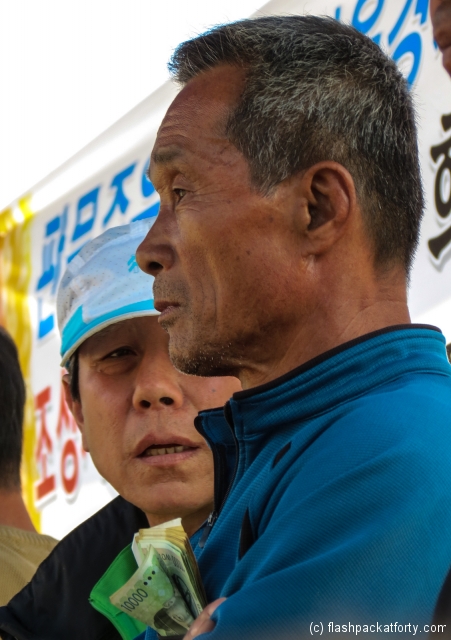
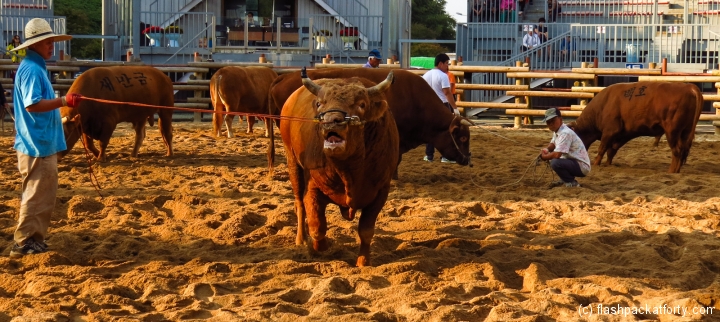
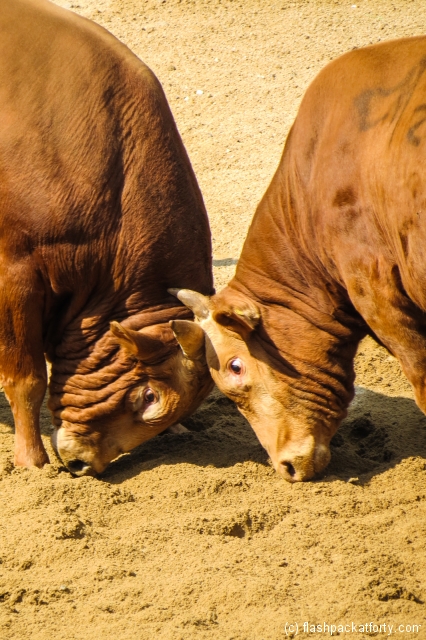

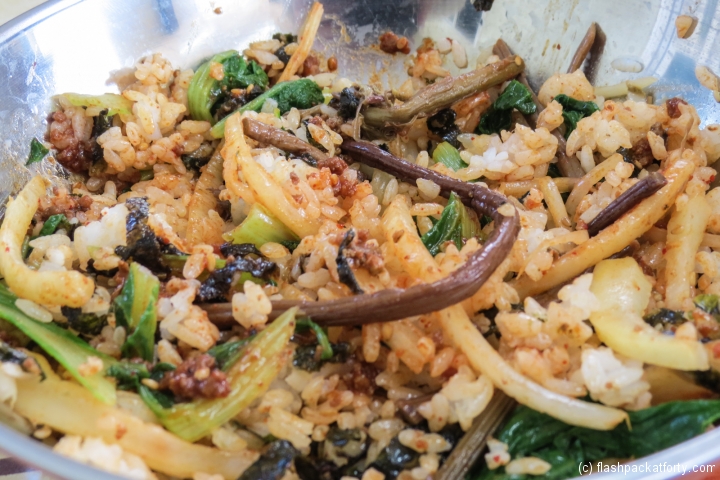
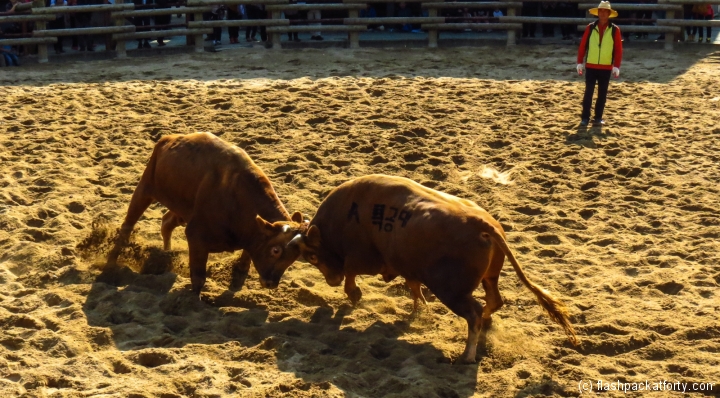
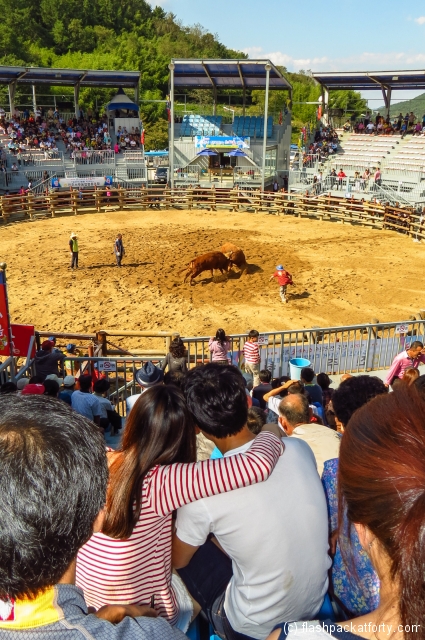
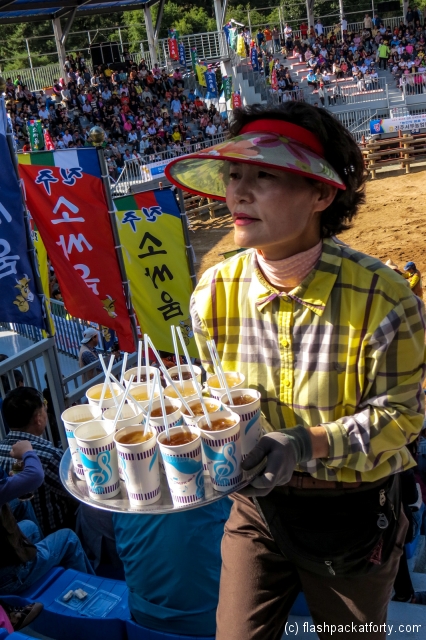
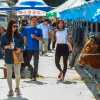
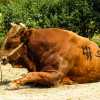

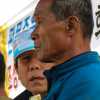
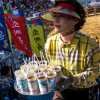
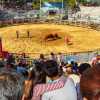
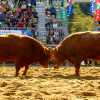
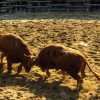

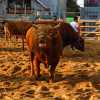

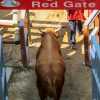
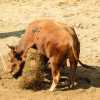

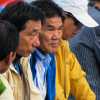
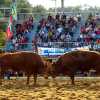
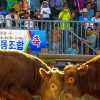

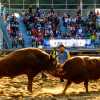
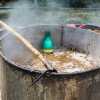
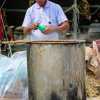

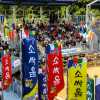


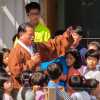









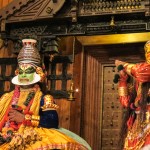








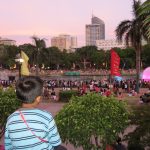
Crazy! Very wild west – and so weird to see in South Korea. Really great post and photos. Look forward to following your blog now found you via TBUnite!
We didn’t think for a moment we’d be watching a bullfight when considering travel in Korea. Its quite difficult finding the time to regularly post, and network with other travel bloggers, so thanks for your kind comments it means a lot. We’re so busy travel planning and are always on the move, its hard to share stuff with the travel community. Not that I’m complaining, we are having the trip of a lifetime. Thanks again.
I didn’t know Korea even had a history of bull fighting. Very insightful and comprehensive post!
I am glad it isn’t to the death and the event sounds like a lot of fun, even a little sneaky with the illegal gambling lol.
How was the food? You didn’t mention if the dishes were good or not, unless I missed it.
The food throughout Korea has been amazing, and as its been so good will feature a bit in some of our future travel posts about Korea. So if you like food, as we do, keep watching. We have become addicted to Korean BBQs!